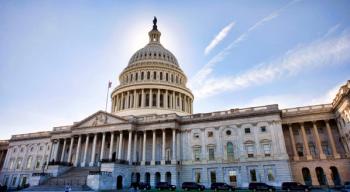
Industry shoots holes in Senate reform legislation
Coverage percentages in the high 90s needed to reach critical mass and spread risk
Industry's main complaint is that a feeble individual coverage mandate will encourage healthier individuals to forgo coverage, jacking up the cost of insurance for everyone else. The bill is projected to expand coverage to 94% of the public, and the penalty for not obtaining insurance is seen as too low to compel the "young invincibles" to sign up.
The analysis by PricewaterhouseCoopers for America's Health Insurance Plans (AHIP) predicts that the cost of coverage will rise by an extra $4,000 for families in 10 years due to the soft coverage mandate, an excise tax on high cost "Cadillac" plans, additional taxes on insurers and providers, and cuts in Medicare provider rates that will aggravate cost shifting to the private sector.
AHIP president Karen Ignagni said at a press briefing that coverage in the "high 90s" is needed to establish a sufficiently broad pool to spread financial and medical risks. Ignagni argued the proposed legislation does too little to bend the cost curve and implied that hospitals and doctors need to absorb a bigger hit in order to reduce healthcare spending.
MORE TO THE STORY
Congressional leaders fired back at the insurer's claims. Some threatened to revoke the industry's long-held anti-trust exemption, which permits state, but not federal, regulation of insurance business.
Senate Finance Committee staffers attacked the studies for failing to consider other reform provisions that might actually lower premiums and costs, noting that reinsurance could spread risk and that catastrophic plans may attract more young healthy individuals. Tax credits and cost-sharing assistance, moreover, can lower the cost of insurance and existing plans will be grandfathered and won't have to offer more costly benefits.
The cost-shift claim, according to Senate analysts, is particularly "specious" because it assumes that hospitals will shift the full amount of Medicare and Medicaid savings onto private insurance, a claim not supported by economic theory or by the Medicare Payment Advisory Commission. On the contrary, say reform advocates, the opportunity to cover more lives will boost future earnings for insurers, who thus will be able to absorb additional fees.
The complaints from insurers did not block the committee from approving its massive reform bill October 13. But industry sent a signal to those negotiating a final bill that they need to do more to cut spending, to broaden the risk pool and to compel all parties to contribute.
Jill Wechsler, a veteran reporter, has been covering Capitol Hill since 1994.
Newsletter
Get the latest industry news, event updates, and more from Managed healthcare Executive.





















































